We held two sessions of Wednesday Morning Birding this week, co-led by Dave Weaver at 7:30 AM and Dave Williams at 9:30 AM. The path of the tropical system that we knew would bring amazing rarities inland this week did not promise the same for the coast. So, we kept to an original plan to meet at Perkins Park in Newburyport, where there is a large post-breeding roost of both Yellow-crowned and Black-crowned Night-Herons. We were not disappointed by the show. Between 7:30 and about 8:15 AM, mostly juvenile night-herons milled about, squawking occasionally, trying out various roosts, sunning themselves, or doing good imitations of vampires. A few adult Black-crowned Night-Herons sat out in full view, one in particular in glorious sunshine for excellent viewing. Although there was a good number of juvenile Yellow-crowned Night-Herons, we did not spot any adults.
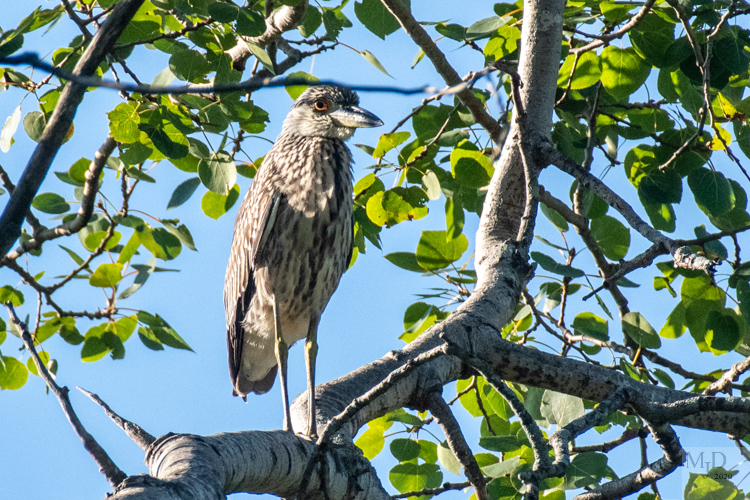
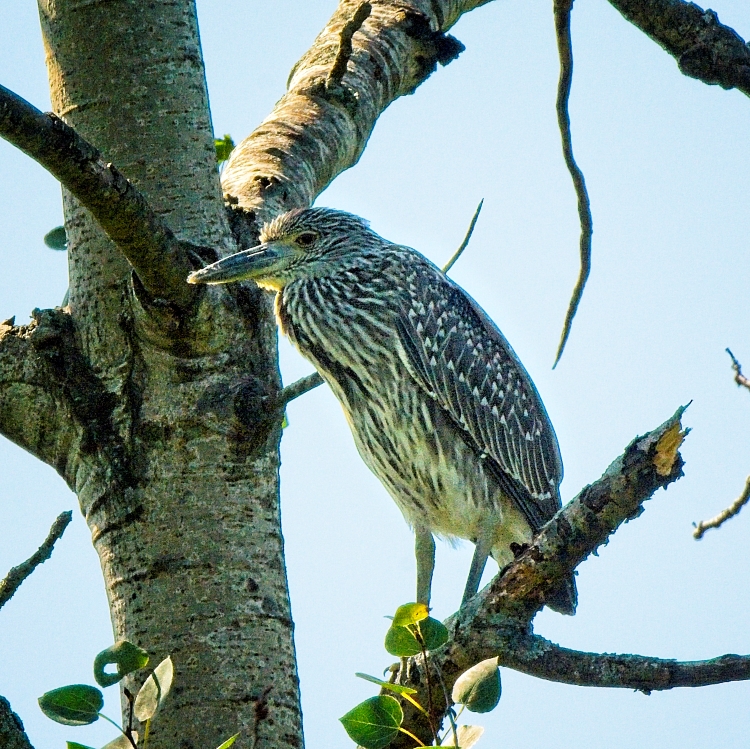
The pond (not visible to us) and the surrounding marsh and sheltering trees were a magnet for other birds, so it was an active place for observation. One Snowy Egret merely thought about coming in during our early session, but many actually arrived during the later session, some making the dramatic twists and turns that help them lose altitude quickly when landing at a roost. The night-herons had settled down considerably by the time our second session began. Hence our advice: should you wish to observe this neat spot, make sure you come early in the day to enjoy it fully. We have also heard some say that the evening exodus is a great thing to watch as well, but in previous years we have found ball games in progress in the evening, and have decided not to fill the outfield with birders as targets for home-run hitters!
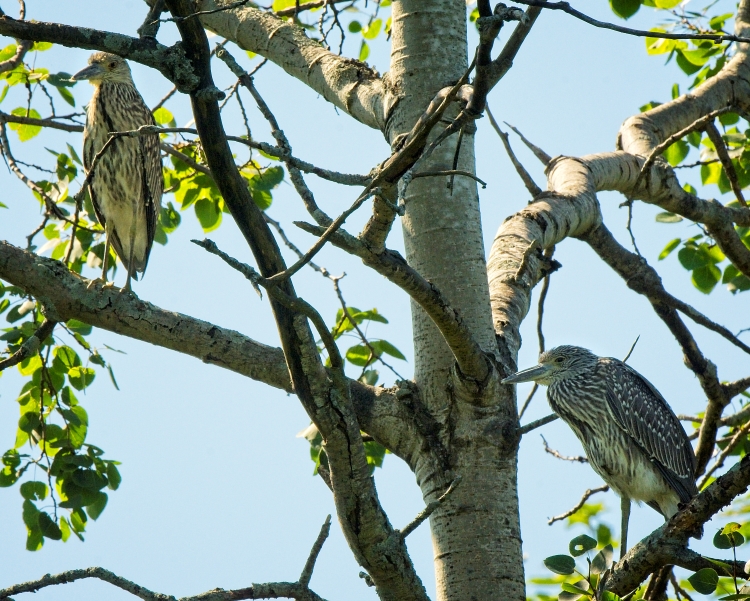
After the earlier group had its fill of the action at the park, we moved down to view the flats off Water Street. There were hundreds or even thousands of peeps and other shorebirds way out on the flats. It was fun to try to find outliers of form or behavior among them and to see the Bald Eagles, an Osprey, and a large contingent of Bonaparte’s Gulls, most of them in alternate plumage. They stand out strikingly from a distance and act so little like Laughing Gulls that it is not hard to distinguish one from the other.
The tide was pushing birds toward shore as our first program ended, so as people arrived for the second one, we sent them straight to the water. By the time the program time arrived, only early arrivers had seen the “magic moment” of the birds being pushed really close. If you’re interested in planning ahead, the water reaches closer to shore and birds become concentrated closer in on an incoming tide when the tide is at about one foot above mean low in Newburyport. Mean low is the height that is considered zero. Other factors can change when it happens, but it works on most days with no significant wind, a low river, and nothing else that could change the timing. It works on the outgoing tide too, but is perhaps less dramatic, as the birds are only arriving, not being concentrated from a “full house” of thousands of birds already on the flats. There are some low tides that never go low enough for the flats to even become exposed, so predicting this from a time relative to the time of low tide is much less precise.
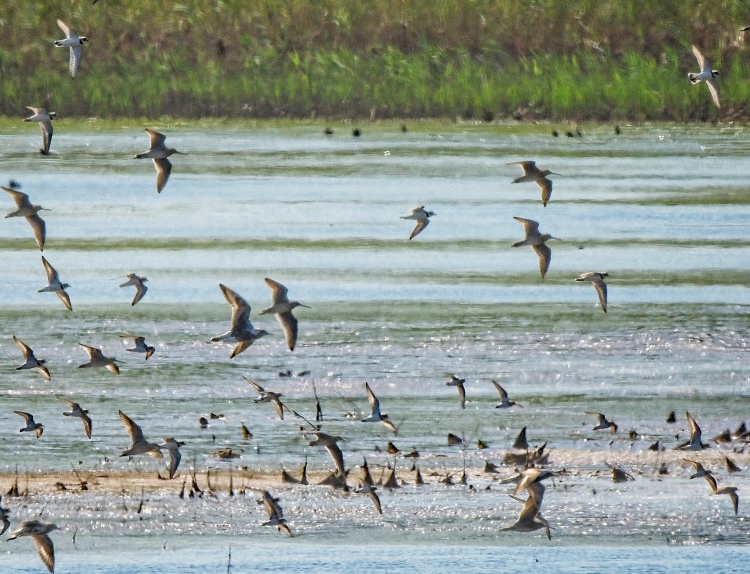
In the second group we took a quick look at the night-heron viewing spot, then headed out to Parker River National Wildlife Refuge, to the dike at Hellcat Observation Area. The flats at Bill Forward Pool were well-populated by shorebirds. We did not find any uncommon ones, other than one White-rumped Sandpiper. It was still fun watching them occasionally make a spectacularly synchronized flight around the impoundment, for no reason we could discern. We also ran into some birder friends who happened to be there too, and great happiness ensued after months of separation and endured challenges. It was such a wonderful sound to hear, these voices of reunited old friends, almost as wonderful as the “chucklehead” calls of the Semipalmated Plovers running around out on the flats.
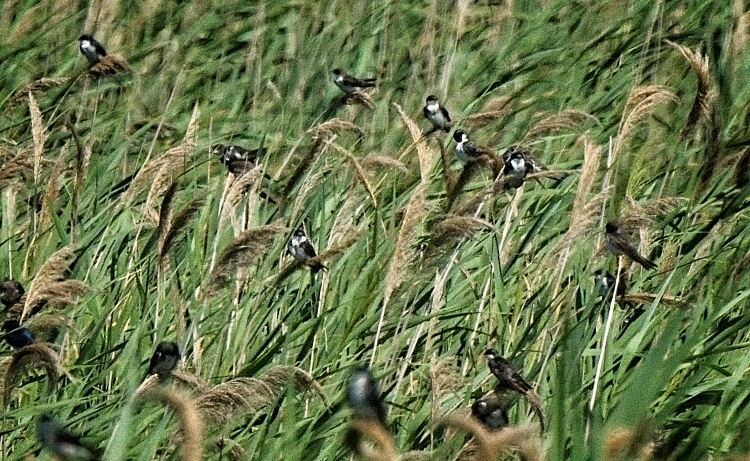
Our List: (numbers: 7:30 am – Perkins Park + Joppa Flats , 9:30 am – Joppa Flats, Perkins Park, Hellcat Dike)
Mallard (0, 9)
Wild Turkey (0, 2)
Mourning Dove (2, 3)
Chimney Swift (4, 5)
Black-bellied Plover (~30, ~45)
Killdeer (0, 3)
Semipalmated Plover (prob 100s, ~250)
White-rumped Sandpiper (0, 1)
Semipalmated Sandpiper P (~1500, ~700) – 7:30 on Joppa Flats at distance; 9:30, Bill Forward Pool.
Short-billed Dowitcher (13, 50)
Lesser Yellowlegs (1, 4)
Greater Yellowlegs (5, 20)
Bonaparte’s Gull (48, ~15)
Ring-billed Gull (~15, 5)
Herring Gull (~25, ~30)
Great Black-backed Gull (3, 5)
Least Tern (0, 5)
Common Tern (~15, 5)
Double-crested Cormorant (7, ~15)
Great Blue Heron (1, 3)
Great Egret (0, 10) – Various.
Snowy Egret (4, ~20) – Later session, all flying into wetland at Perkins Park.
Black-crowned Night-Heron (9, 5) – All at Perkins Park.
Yellow-crowned Night-Heron (5, 3) – All at Perkins Park.
Turkey Vulture (1, 5)
Osprey (1, 2)
Bald Eagle (2, 1) – Joppa Flats/Merrimack River.
Downy Woodpecker (1, 0)
Eastern Kingbird (0, 3)
Blue Jay (2, 0)
Tree Swallow (~10, ~700) – Latter numbers roosting in and foraging over North Pool reeds, and dunes.
Northern Rough-winged Swallow (2, 4) – Foraging over Joppa Marsh.
Purple Martin (0, 12) – Driving by parking lot #1 on PRNWR.
Black-capped Chickadee (2, 0)
Marsh Wren (0, 2)
American Robin (0, 5)
Gray Catbird (0, 3) – 1, Perkins; 2, refuge road.
Northern Mockingbird (0, 3)
European Starling (20, 200)
Cedar Waxwing (1, 4)
House Sparrow (7, 15)
House Finch (4, 1) – By water at Joppa Flats.
American Goldfinch (5, 9)
Chipping Sparrow (2, 0)
Song Sparrow (2, 1)
Red-winged Blackbird (0, 5)
Common Grackle (2, 0)
Northern Cardinal (2, 1)
Rose-breasted Grosbeak (1, 0) – Short song at Perkins Park.


Please sign me up for this blog